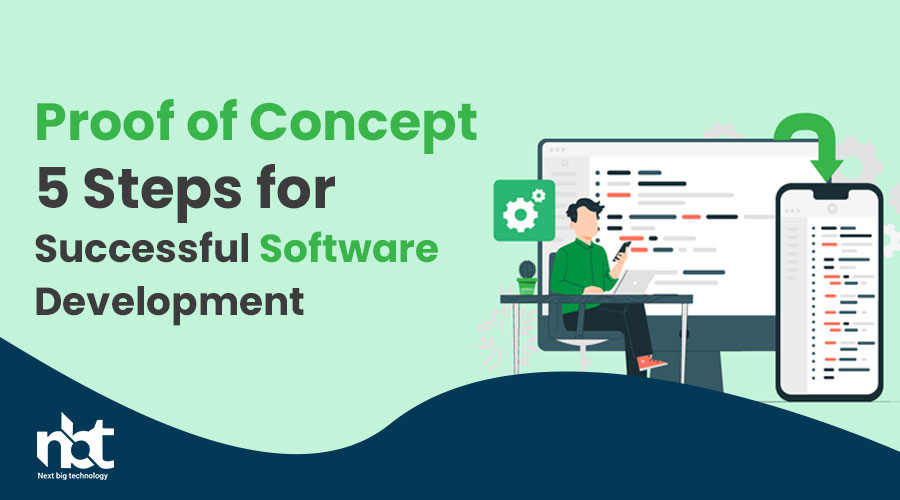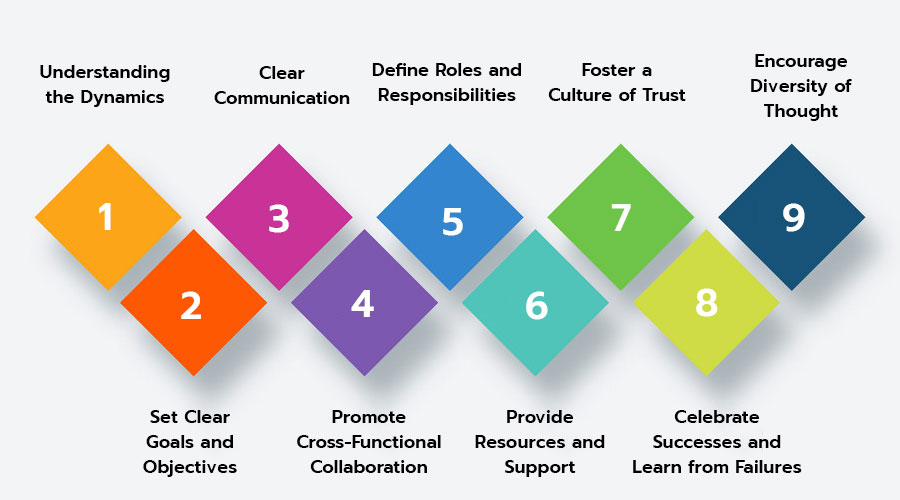Table of Contents
Understanding the Conceptual Framework
In the vast landscape of academia and professional spheres, the term “conceptual framework” stands as a cornerstone, guiding research, analysis, and decision-making processes. From scholarly dissertations to business strategies, understanding the conceptual framework is paramount for laying the groundwork for any endeavor. Let’s delve into its depths to unravel its essence and significance.
Deciphering the Conceptual Framework
At its core, a conceptual framework serves as a theoretical construct that provides a foundation for understanding the interplay of variables within a particular phenomenon. It delineates the underlying principles, assumptions, and relationships that shape a subject matter. Whether in the realms of academia, business, or policy formulation, a conceptual framework acts as a scaffold, structuring thoughts and inquiries.
Components of a Conceptual Framework
- Concepts: These are the building blocks of the framework, representing abstract ideas or phenomena under investigation. Concepts can range from tangible entities to intangible notions, forming the basis of analysis.
- Variables: Within the conceptual framework, variables are attributes or characteristics that can vary and have an impact on the phenomenon being studied. They can be independent, dependent, or moderating, contributing to the complexity of the framework.
- Relationships: The framework elucidates the connections and interactions between variables, elucidating how changes in one element may influence others. These relationships can be causal, correlational, or contingent, adding depth to the understanding of the subject matter.
- Assumptions: Implicit or explicit assumptions underpin the conceptual framework, shaping the perspective through which the phenomenon is examined. Acknowledging these assumptions is essential for critical appraisal and interpretation.
Importance of Conceptual Frameworks
- Guiding Research: Conceptual frameworks provide researchers with a roadmap, guiding the formulation of research questions, hypotheses, and methodologies. They offer a structured approach to inquiry, enhancing the coherence and rigor of scholarly endeavors.
- Organizing Knowledge: In academic disciplines, conceptual frameworks organize existing knowledge and theories, facilitating the synthesis of diverse perspectives. They serve as lenses through which scholars interpret phenomena, fostering intellectual coherence and continuity.
- Informing Decision-Making: In practical contexts such as business and policy, conceptual frameworks inform decision-making processes by delineating key factors and their interrelationships. They offer a systematic approach to problem-solving, aiding in strategic planning and implementation.
- Facilitating Communication: Conceptual frameworks serve as a common language for scholars, practitioners, and stakeholders, facilitating communication and collaboration. They enable the exchange of ideas, theories, and findings across disciplinary boundaries, fostering interdisciplinary dialogue.
Crafting an Effective Conceptual Framework
- Clarity and Precision: A well-defined conceptual framework should be clear, concise, and precise in its delineation of concepts, variables, and relationships. Ambiguity can hinder understanding and impede the validity of research outcomes.
- Alignment with Objectives: The conceptual framework should align with the objectives and scope of the study or endeavor. It should reflect the overarching research questions or goals, ensuring relevance and coherence.
- Integration of Literature: Drawing on existing literature and theoretical frameworks is integral to crafting a robust conceptual framework. Synthesizing relevant theories and empirical evidence enhances the theoretical foundation and enriches the analysis.
- Flexibility and Adaptability: While providing a structured framework, it’s essential to allow for flexibility and adaptability to accommodate evolving perspectives and emergent phenomena. A dynamic framework can better capture the complexity and nuances of real-world phenomena.
Defining Clear Objectives and Requirements
In the bustling realm of project management and business development, one of the fundamental pillars that pave the path to success is the clear delineation of objectives and requirements. It’s akin to charting a course before embarking on a journey; without a roadmap, the destination remains obscure, and the voyage, fraught with uncertainties. Thus, let’s delve into the essence of defining clear objectives and requirements, unraveling its significance and strategies for implementation.
The Blueprint of Success:
1. Laying the Foundation: Clear objectives serve as the guiding stars illuminating the path towards organizational success. They provide a definitive direction, aligning the efforts of individuals and teams towards a common goal. Before commencing any endeavor, it’s imperative to meticulously outline the desired outcomes, ensuring clarity and coherence across all stakeholders.
2. Navigating the Terrain: A comprehensive understanding of requirements is akin to possessing a detailed map of the terrain. It delineates the scope, constraints, and resources essential for realizing the objectives. By meticulously identifying and documenting requirements, organizations can mitigate risks, streamline processes, and optimize resource allocation.
3. Fostering Collaboration: Clear objectives and requirements serve as a common language that fosters collaboration and synergy among diverse stakeholders. When everyone is on the same page regarding the desired outcomes and the means to achieve them, it cultivates a conducive environment for teamwork, innovation, and collective problem-solving.
4. Driving Accountability: Clarity in objectives and requirements lays the groundwork for accountability. It enables individuals and teams to delineate their roles and responsibilities, thereby fostering a sense of ownership and commitment towards achieving the stated goals. Moreover, well-defined metrics and milestones facilitate progress tracking and performance evaluation.
Strategies for Implementation:
1. Stakeholder Engagement: Involve key stakeholders from the onset to garner diverse perspectives, insights, and expectations. Conduct thorough discussions and workshops to ensure alignment and consensus regarding objectives and requirements.
2. Documentation and Communication: Document objectives and requirements in a clear, concise, and accessible manner. Utilize visual aids, such as flowcharts, diagrams, and prototypes, to enhance comprehension and facilitate communication across teams.
3. Flexibility and Adaptability: Acknowledge that objectives and requirements may evolve over time due to changing market dynamics, stakeholder feedback, or unforeseen circumstances. Embrace flexibility and adopt agile methodologies to accommodate adjustments while maintaining focus on the overarching goals.
4. Continuous Evaluation and Improvement: Regularly evaluate progress against defined objectives and requirements. Solicit feedback from stakeholders and leverage lessons learned to refine strategies, optimize processes, and enhance outcomes iteratively.
Selecting the Right Technologies and Tools
In today’s digital age, the success of any business heavily relies on its ability to leverage the right technologies and tools. Whether you’re a startup or an established enterprise, making informed decisions about the tech stack you adopt can significantly impact your efficiency, productivity, and ultimately, your bottom line. With the plethora of options available, it’s crucial to approach the selection process strategically. Here’s a guide to help you navigate the tech landscape and choose the right technologies and tools for your business.
- Define Your Objectives: Before diving into the sea of tech solutions, clearly define your business objectives and identify the specific problems you aim to solve or opportunities you seek to seize. Understanding your goals will guide your technology selection process and ensure alignment between your tech investments and your overarching business strategy.
- Assess Your Needs: Conduct a comprehensive assessment of your current processes, workflows, and existing technology infrastructure. Identify pain points, bottlenecks, and areas for improvement. Solicit feedback from key stakeholders across different departments to gain diverse perspectives on what functionalities and features are essential for addressing your business challenges.
- Research Extensively: With a clear understanding of your objectives and requirements, embark on thorough research to explore available technologies and tools that align with your needs. Leverage online resources, industry publications, peer recommendations, and case studies to evaluate different solutions. Pay attention to factors such as scalability, compatibility, security, support, and total cost of ownership (TCO) when comparing options.
- Consider Integration: In today’s interconnected ecosystem, seamless integration between various tools and systems is paramount. Assess how prospective technologies can integrate with your existing infrastructure and other tools you currently use. Look for solutions that offer robust APIs, pre-built integrations, or compatibility with popular platforms to streamline data flow and enhance interoperability.
- Prioritize User Experience: User experience (UX) plays a pivotal role in the adoption and effectiveness of any technology solution. Prioritize tools that are intuitive, user-friendly, and require minimal training for your team to get up to speed. Consider conducting trials or demos to gauge the usability and interface of different platforms firsthand.
- Evaluate Scalability and Flexibility: As your business grows and evolves, your technology needs will inevitably change. Choose solutions that are scalable and flexible enough to accommodate future expansion and adapt to evolving requirements. Avoid getting locked into proprietary systems that may hinder your ability to pivot or scale efficiently.
- Assess Security and Compliance: Data security and regulatory compliance are non-negotiable considerations when selecting technology solutions, especially in industries handling sensitive information. Scrutinize the security features, encryption standards, compliance certifications, and data privacy policies of prospective vendors to ensure they meet your organization’s standards and regulatory obligations.
- Seek Feedback and References: Before making a final decision, seek feedback from peers, industry experts, and existing users of the technologies you’re considering. Case studies and testimonials can provide valuable insights into real-world experiences and outcomes. Reach out to vendors for references or customer referrals to validate their claims and get a sense of their reputation and customer satisfaction.
- Plan for Implementation and Support: Effective implementation and ongoing support are essential for maximizing the value of your technology investments. Develop a comprehensive implementation plan that outlines timelines, milestones, and responsibilities to ensure a smooth transition. Evaluate the level of support, training resources, and maintenance services offered by vendors to mitigate risks and address any challenges that may arise post-implementation.
- Iterate and Evolve: Technology is not static, and neither are your business needs. Embrace a mindset of continuous improvement and iteration. Regularly review and reassess your technology stack to identify areas for optimization, innovation, and replacement as new technologies emerge and your business landscape evolves.
Prototyping and Iterative Development
In today’s fast-paced digital landscape, the success of any product hinges on its ability to meet user needs effectively. Prototyping and iterative development have emerged as indispensable tools in the arsenal of product development, enabling teams to create user-centric solutions that resonate with their audience. This article delves into the significance of prototyping and iterative development in the product development lifecycle and explores how they contribute to building better products.
Understanding Prototyping:
Prototyping is the process of creating a preliminary version of a product to test its functionality, design, and usability before the final product is developed. It allows designers and developers to gather feedback from stakeholders and end-users early in the development cycle, facilitating informed decision-making and reducing the risk of costly mistakes down the line.
Benefits of Prototyping:
- Faster Feedback Loops: Prototyping enables teams to quickly validate assumptions and hypotheses, leading to faster iterations and improvements. By soliciting feedback from users at an early stage, teams can identify potential issues and address them before they escalate.
- Mitigation of Risks: By uncovering usability issues and design flaws early in the process, prototyping helps mitigate risks associated with product development. It allows teams to make necessary adjustments and refinements, ensuring that the final product meets user expectations.
- Enhanced Collaboration: Prototyping fosters collaboration among cross-functional teams, including designers, developers, and product managers. By visualizing concepts and ideas in a tangible form, prototypes facilitate communication and alignment, leading to better outcomes.
Iterative Development:
Iterative development is a methodology that emphasizes incremental progress and continuous improvement throughout the development lifecycle. Instead of attempting to deliver a complete product in a single phase, iterative development breaks the process into smaller, manageable cycles or iterations, with each iteration delivering a working version of the product.
Advantages of Iterative Development:
- Adaptability: Iterative development allows teams to adapt to changing requirements and market dynamics more effectively. By focusing on delivering small, incremental improvements, teams can respond to feedback and evolving priorities in a timely manner.
- Continuous Refinement: Through successive iterations, products undergo continuous refinement and enhancement. Each iteration builds upon the lessons learned from previous cycles, resulting in a product that is more closely aligned with user needs and preferences.
- Reduced Time to Market: By breaking the development process into smaller cycles, iterative development shortens the time to market for products. It enables teams to release valuable features and functionalities sooner, gaining a competitive edge in the marketplace.
The Synergy Between Prototyping and Iterative Development:
When combined, prototyping and iterative development form a powerful duo that accelerates the product development process and improves outcomes. Prototyping provides a mechanism for quickly testing ideas and gathering feedback, while iterative development allows teams to incorporate that feedback into subsequent iterations, driving continuous improvement.
Conducting Comprehensive Testing and Validation
In the ever-evolving landscape of technology and product development, the significance of comprehensive testing and validation cannot be overstated. Whether it’s software, hardware, or any other product, thorough testing is essential to ensure functionality, reliability, and user satisfaction. This article delves into the importance of conducting comprehensive testing and validation, outlining the steps involved and best practices to achieve excellence in product quality.
Understanding Comprehensive Testing and Validation
Comprehensive testing and validation encompass a systematic approach to evaluating a product’s performance, functionality, and compliance with specified requirements. It involves a series of rigorous tests, simulations, and assessments conducted throughout the development lifecycle. The primary goal is to identify and rectify any defects or discrepancies before the product is released to the market, thus ensuring optimal quality and user experience.
The Importance of Comprehensive Testing and Validation
- Quality Assurance: Thorough testing helps in detecting and fixing defects early in the development process, preventing costly rework and potential issues post-release. It ensures that the final product meets the expected quality standards and specifications.
- Enhanced Reliability: Comprehensive testing instills confidence in the product’s reliability and performance under different conditions. It helps in identifying and addressing potential vulnerabilities, thereby enhancing the overall robustness of the product.
- Customer Satisfaction: By conducting comprehensive testing and validation, companies can deliver products that meet or exceed customer expectations in terms of functionality, usability, and performance. This, in turn, leads to higher customer satisfaction and loyalty.
- Regulatory Compliance: In regulated industries such as healthcare, finance, and automotive, adherence to regulatory standards and requirements is paramount. Comprehensive testing ensures that the product complies with relevant regulations and industry standards, reducing legal and financial risks.
Steps Involved in Comprehensive Testing and Validation
- Requirement Analysis: Understand the project requirements thoroughly to define test objectives, scope, and success criteria.
- Test Planning: Develop a comprehensive test plan outlining test scenarios, methodologies, resources, and timelines.
- Test Design: Design test cases and scenarios covering functional, non-functional, and edge cases to ensure maximum test coverage.
- Test Execution: Execute the planned tests using appropriate tools and techniques, recording test results and any observed deviations.
- Defect Tracking and Management: Document and prioritize detected defects, ensuring timely resolution and closure.
- Regression Testing: Conduct regression testing to ensure that new changes or fixes do not adversely impact existing functionalities.
- Validation: Validate the product against customer requirements and expectations to ensure alignment and satisfaction.
- Documentation and Reporting: Document test results, findings, and recommendations in a comprehensive test report for stakeholders’ review.
Best Practices for Effective Testing and Validation
- Early Testing: Start testing early in the development lifecycle to identify and address issues at the earliest stages, reducing rework and cost.
- Test Automation: Leverage automation tools for repetitive and regression testing to increase efficiency and accuracy.
- Realistic Test Environment: Create test environments that closely mimic the production environment to simulate real-world scenarios accurately.
- Continuous Improvement: Adopt a culture of continuous improvement by analyzing test results, feedback, and lessons learned to refine testing processes and practices.
- Collaboration and Communication: Foster collaboration between development, testing, and other stakeholders to ensure a shared understanding of requirements and priorities.
Documenting and Evaluating Results
In any endeavor, be it personal or professional, the ability to document and evaluate results is paramount to success. Whether you’re embarking on a new project, implementing a strategy, or assessing the effectiveness of a campaign, thorough documentation and evaluation serve as the compass guiding you toward your goals. In this article, we’ll delve into the importance of documenting and evaluating results, as well as provide practical tips on how to do so effectively.
Why Documenting and Evaluating Results Matter
Documenting and evaluating results are not merely bureaucratic tasks; they are the cornerstones of informed decision-making and continuous improvement. Here’s why they matter:
- Accountability: Documenting results provides a clear record of actions taken and outcomes achieved. It holds individuals and teams accountable for their performance, fostering a culture of responsibility and transparency.
- Insightful Analysis: Evaluation allows you to dig deeper into the data, uncovering trends, patterns, and insights that inform future strategies. It helps you understand what works well and what needs improvement.
- Resource Optimization: By evaluating results, you can identify inefficiencies and areas of wastage, enabling you to allocate resources more effectively in the future.
- Strategic Decision-making: Documented results serve as a foundation for strategic decision-making. They provide the necessary information to assess the effectiveness of current strategies and pivot when necessary.
Effective Strategies for Documenting Results
- Set Clear Objectives: Before embarking on any endeavor, clearly define your objectives and key performance indicators (KPIs). These will serve as benchmarks for evaluating success.
- Use Reliable Tools: Invest in reliable tools and software for data collection and analysis. Whether it’s project management software, analytics platforms, or surveys, having the right tools streamlines the documentation process.
- Maintain Consistent Records: Establish a standardized system for documenting results, ensuring consistency across projects and teams. This could include templates, file naming conventions, and folder structures.
- Include Contextual Information: Document not only the results themselves but also the context surrounding them. This includes the methodologies used, external factors that may have influenced outcomes, and any deviations from the original plan.
Best Practices for Evaluating Results
- Regular Reviews: Schedule regular review sessions to evaluate results against predefined KPIs. This allows you to course-correct in real-time and make informed decisions as the project progresses.
- Compare Against Benchmarks: Benchmarking your results against industry standards or previous performance provides valuable context. It helps identify areas of strength and weakness relative to your peers or past performance.
- Seek Feedback: Don’t rely solely on quantitative data; qualitative feedback is equally important. Solicit feedback from stakeholders, team members, and end-users to gain a holistic understanding of performance.
- Iterate and Improve: Use evaluation findings as a springboard for improvement. Identify areas for refinement, implement changes, and monitor the impact of those changes through ongoing evaluation cycles.
Addressing Feedback and Iterating
In the dynamic landscape of professional growth and development, one concept reigns supreme: feedback. Whether it’s constructive criticism from a supervisor, suggestions from peers, or insights gleaned from customer reviews, feedback is the compass guiding us toward excellence. However, receiving feedback is just the beginning. It’s what we do with it that truly defines our trajectory. Enter iteration—the process of taking feedback and refining our approach to achieve better outcomes. Let’s delve into the art of addressing feedback and iterating for continuous improvement.
Understanding Feedback: Feedback is the lifeblood of progress. It provides us with invaluable insights into our performance, highlighting areas of strength and areas needing improvement. However, feedback can sometimes be hard to swallow. It’s human nature to feel defensive or discouraged when confronted with criticism. Yet, embracing feedback with an open mind is the first step toward growth.
Active Listening and Reflection: When receiving feedback, it’s crucial to adopt an attitude of active listening. Resist the urge to interrupt or defend yourself. Instead, focus on understanding the perspective being offered. Reflect on the feedback, considering its validity and potential areas for implementation. Remember, feedback is not a personal attack but rather an opportunity for enhancement.
Identifying Actionable Insights: Not all feedback is created equal. Some may be vague or subjective, while others are specific and actionable. The key is to discern which insights are most relevant to your goals and objectives. Look for patterns in the feedback received. Is there a recurring theme pointing to a particular area needing improvement? By identifying actionable insights, you can prioritize areas for iteration effectively.
Embracing the Iterative Process: Iteration is the engine driving continuous improvement. It’s about taking feedback and using it to refine and enhance our approach. Rather than viewing feedback as a setback, see it as a catalyst for progress. Break down larger goals into smaller, manageable tasks that align with the feedback received. Implement changes incrementally, evaluating their impact along the way.
Seeking Collaborative Input: Feedback doesn’t exist in a vacuum. Collaborating with others can provide diverse perspectives and valuable insights. Don’t hesitate to seek input from colleagues, mentors, or industry experts. By involving others in the iterative process, you can leverage collective wisdom to drive meaningful change.
Measuring Progress and Adaptation: Effective iteration requires measurement and adaptation. Set benchmarks to track progress toward your goals. Monitor key metrics to assess the impact of your iterative efforts. Be prepared to adapt your approach based on the feedback received and the outcomes observed. Remember, iteration is not a one-time fix but an ongoing commitment to improvement.
Celebrating Success and Learning from Failure: As you iterate and progress, celebrate your successes along the way. Recognize the hard work and dedication that have led to positive outcomes. At the same time, embrace failure as an opportunity for learning and growth. Not every iteration will yield the desired results, and that’s okay. Failure is not the end but rather a stepping stone toward future success.
Ensuring Scalability and Performance
In today’s digital landscape, ensuring scalability and performance is paramount for businesses striving to thrive in a competitive environment. As the demand for online services continues to surge, organizations must adopt robust strategies to accommodate growth while maintaining optimal performance levels. This article explores essential techniques and best practices to achieve scalability and performance, empowering businesses to meet evolving customer expectations and sustain long-term success.
- Scalability Fundamentals: Scalability refers to an organization’s ability to handle increasing workload without compromising performance or user experience. Whether it’s a surge in website traffic, expanding customer base, or growing data volume, scalable systems can adapt seamlessly to meet rising demands. Embracing scalable architectures such as microservices, containerization, and serverless computing enables businesses to flexibly scale resources based on fluctuating needs.
- Performance Optimization: Performance optimization focuses on enhancing system efficiency and responsiveness to deliver a seamless user experience. Through meticulous code optimization, database tuning, and caching mechanisms, businesses can minimize latency and maximize throughput. Employing content delivery networks (CDNs) further accelerates content delivery by caching static assets closer to end-users, reducing latency and bandwidth consumption.
- Horizontal and Vertical Scaling: Horizontal scaling involves adding more instances or nodes to distribute the workload across multiple resources. This approach facilitates load balancing and fault tolerance, ensuring high availability and reliability. Conversely, vertical scaling involves upgrading existing resources such as CPU, memory, or storage to handle increased demand. By strategically combining horizontal and vertical scaling, organizations can achieve optimal resource utilization and cost-effectiveness.
- Monitoring and Analytics: Real-time monitoring and analytics are indispensable for identifying performance bottlenecks and proactively addressing issues. Leveraging robust monitoring tools and logging mechanisms provides valuable insights into system behavior, resource utilization, and application performance. By establishing key performance indicators (KPIs) and thresholds, businesses can detect anomalies, troubleshoot performance issues, and optimize system performance iteratively.
- Automated Scaling and Provisioning: Automation streamlines the process of scaling resources dynamically based on predefined criteria or workload patterns. Implementing auto-scaling policies enables systems to automatically adjust resource allocation in response to changing demand, ensuring optimal performance and cost efficiency. Additionally, automated provisioning of infrastructure resources using infrastructure as code (IaC) frameworks such as Terraform or CloudFormation accelerates deployment and enhances scalability.
- Capacity Planning and Forecasting: Effective capacity planning involves forecasting future demand and aligning resource provisioning accordingly. By analyzing historical trends, seasonality patterns, and business projections, organizations can anticipate growth trajectories and scale resources proactively. Collaborative efforts between development, operations, and business teams facilitate informed decision-making and ensure alignment with strategic objectives.
- Continuous Performance Testing: Continuous performance testing is integral to validating system scalability and resilience under varying loads and conditions. Adopting performance testing methodologies such as load testing, stress testing, and soak testing enables organizations to identify performance limitations, bottlenecks, and failure points early in the development lifecycle. By integrating performance testing into continuous integration/continuous deployment (CI/CD) pipelines, businesses can mitigate performance risks and deliver high-quality software iteratively.
Collaborating Across Teams Effectively
In today’s dynamic work environment, collaboration across teams has emerged as a cornerstone of success for businesses striving to stay ahead in their respective industries. Whether it’s in a startup, a multinational corporation, or a nonprofit organization, the ability to collaborate effectively across teams can make or break a project’s outcome. It’s not just about working together; it’s about working together efficiently and cohesively towards a common goal.
Understanding the Dynamics: Before delving into strategies for effective collaboration, it’s essential to understand the dynamics at play. Teams often have distinct goals, priorities, and work styles. These differences can lead to misunderstandings, conflicts, and inefficiencies if not managed effectively. Recognizing and respecting these differences is the first step towards building a collaborative environment.
Clear Communication: Effective collaboration starts with clear communication. Teams must establish open channels for communication, ensuring that information flows freely between team members. This includes regular meetings, status updates, and feedback sessions. Utilizing collaboration tools such as Slack, Microsoft Teams, or Trello can streamline communication and keep everyone on the same page.
Define Roles and Responsibilities: Ambiguity regarding roles and responsibilities can lead to confusion and duplication of efforts. To avoid this, teams should clearly define each member’s roles and responsibilities from the outset of a project. This clarity helps prevent misunderstandings and ensures that everyone knows what is expected of them.
Foster a Culture of Trust: Trust is the foundation of effective collaboration. Team members must trust each other’s expertise, judgment, and commitment to the project’s success. Leaders play a crucial role in fostering this culture of trust by leading by example, being transparent in their actions, and encouraging open communication.
Encourage Diversity of Thought: Diverse teams bring a wealth of perspectives, ideas, and experiences to the table. Encouraging diversity of thought fosters innovation and creative problem-solving. Leaders should create an inclusive environment where all team members feel valued and empowered to contribute their unique insights.
Set Clear Goals and Objectives: Without clear goals and objectives, teams can easily lose sight of the bigger picture. Leaders should articulate the project’s goals and objectives upfront, ensuring that everyone understands what they are working towards. These goals should be specific, measurable, achievable, relevant, and time-bound (SMART) to provide clear direction and accountability.
Promote Cross-Functional Collaboration: Cross-functional collaboration breaks down silos and fosters a holistic approach to problem-solving. Leaders should encourage collaboration across departments, disciplines, and expertise areas to leverage the full range of skills and knowledge within the organization. This cross-pollination of ideas can lead to innovative solutions that would not have been possible otherwise.
Provide Resources and Support: Effective collaboration requires adequate resources and support. Leaders should ensure that teams have the tools, technology, and resources they need to succeed. This includes providing training, mentorship, and coaching to help team members develop the skills necessary for effective collaboration.
Celebrate Successes and Learn from Failures: Celebrating successes and learning from failures is essential for continuous improvement. Leaders should acknowledge and celebrate achievements, no matter how small, to boost team morale and motivation. Likewise, failures should be seen as learning opportunities rather than setbacks, with a focus on identifying lessons learned and applying them to future projects.
Top Successful Software Development Companies
In the dynamic landscape of technology, software development companies play a pivotal role in shaping the digital future. With an array of innovative solutions and cutting-edge technologies, these companies are revolutionizing industries and driving growth worldwide. Here, we delve into the realm of top-tier software development firms that have carved a niche for themselves through their exceptional expertise and unparalleled achievements.
-
Next Big Technology:

Focus Area
- Mobile App Development
- App Designing (UI/UX)
- Software Development
- Web Development
- AR & VR Development
- Big Data & BI
- Cloud Computing Services
- DevOps
- E-commerce Development
Industries Focus
- Art, Entertainment & Music
- Business Services
- Consumer Products
- Designing
- Education
- Financial & Payments
- Gaming
- Government
- Healthcare & Medical
- Hospitality
- Information Technology
- Legal & Compliance
- Manufacturing
- Media
2. Microsoft Corporation: Microsoft, synonymous with software excellence, stands as a beacon of innovation in the realm of technology. With flagship products like Windows operating system, Office productivity suite, and Azure cloud services, Microsoft caters to both individual and enterprise needs with unparalleled precision. The company’s commitment to fostering a culture of innovation is evident through its continuous evolution and adaptation to emerging trends.
3. IBM Corporation: IBM, a pioneer in the world of computing, has seamlessly transitioned into a leading software development company, offering a diverse portfolio of solutions aimed at driving digital transformation. From enterprise software and cloud computing to artificial intelligence and blockchain technology, IBM leverages its deep industry expertise to deliver cutting-edge solutions that empower businesses to thrive in the digital age.
4. Amazon Web Services (AWS): Amazon’s foray into software development through AWS has redefined the landscape of cloud computing. With a vast array of services spanning computing, storage, database, and beyond, AWS provides the backbone for countless digital initiatives worldwide. The company’s relentless focus on scalability, reliability, and security has cemented its position as a preferred choice for organizations seeking robust and flexible cloud solutions.
5. Adobe Inc.: Adobe, synonymous with creativity and innovation, has evolved into a powerhouse in the realm of software development, particularly in the creative and digital experience domains. With flagship products like Adobe Creative Cloud and Experience Cloud, the company empowers individuals and businesses to unleash their creative potential and deliver immersive digital experiences across channels. Adobe’s commitment to innovation and customer-centricity continues to drive its success in an ever-evolving market.
FAQs On Successful Software Development
In the rapidly evolving landscape of technology, successful software development is a cornerstone for businesses aiming to stay competitive and meet the demands of modern consumers. However, navigating through the complexities of software development can often raise numerous questions. Below, we address some of the frequently asked questions (FAQs) to provide clarity and insight into this crucial process.
1. What is the key to successful software development? Successful software development hinges on several factors, but perhaps the most critical is clear communication. Effective communication ensures that all stakeholders understand the project requirements, timelines, and expectations. Additionally, thorough planning, robust project management, and a skilled development team contribute significantly to success.
2. How do you choose the right development methodology? The choice of development methodology depends on various factors, including project size, complexity, and team dynamics. Agile methodologies like Scrum or Kanban are popular for their flexibility and iterative approach, allowing for frequent feedback and adaptation. However, for more predictable projects with well-defined requirements, a traditional waterfall approach may be suitable.
3. What role does testing play in successful software development? Testing is paramount in ensuring the quality and reliability of software. It involves various stages, including unit testing, integration testing, and acceptance testing, among others. By thoroughly testing the software throughout the development lifecycle, developers can identify and address issues early, reducing the risk of costly errors in the final product.
4. How do you manage project scope and requirements effectively? Managing project scope and requirements requires careful planning and stakeholder engagement. It’s essential to establish clear project objectives and document requirements comprehensively. Additionally, using tools like user stories, prototypes, and requirement traceability matrices can help track changes and ensure alignment with stakeholder expectations.
5. What measures can be taken to ensure cybersecurity in software development? Cybersecurity is a critical consideration in software development, especially with the increasing prevalence of cyber threats. Implementing secure coding practices, conducting regular security audits, and adhering to industry standards and regulations are essential steps in safeguarding software against potential vulnerabilities and attacks.
6. How do you address scalability and maintainability in software development? Designing software with scalability and maintainability in mind is crucial for long-term success. This involves choosing the right architecture, employing modular design principles, and writing clean, well-documented code. Additionally, regularly updating and refactoring codebase helps mitigate technical debt and ensures the software remains adaptable to evolving needs.
7. What role does user experience (UX) design play in successful software development? User experience design is integral to the success of software as it directly impacts user satisfaction and adoption. By understanding user needs and preferences, UX designers create intuitive interfaces and seamless interactions that enhance usability and engagement. Incorporating UX design principles from the outset of development ensures a user-centric approach throughout the process.
8. How do you measure the success of software development projects? The success of software development projects can be measured using various metrics, including project completion time, adherence to budget, customer satisfaction, and software performance metrics like uptime and response time. Regularly monitoring these metrics allows teams to identify areas for improvement and ensure alignment with project goals.
Thanks for reading our post “Proof of Concept: 5 Steps for Successful Software Development”. Please connect with us to learn more about Best Top Successful Software Companies.






















